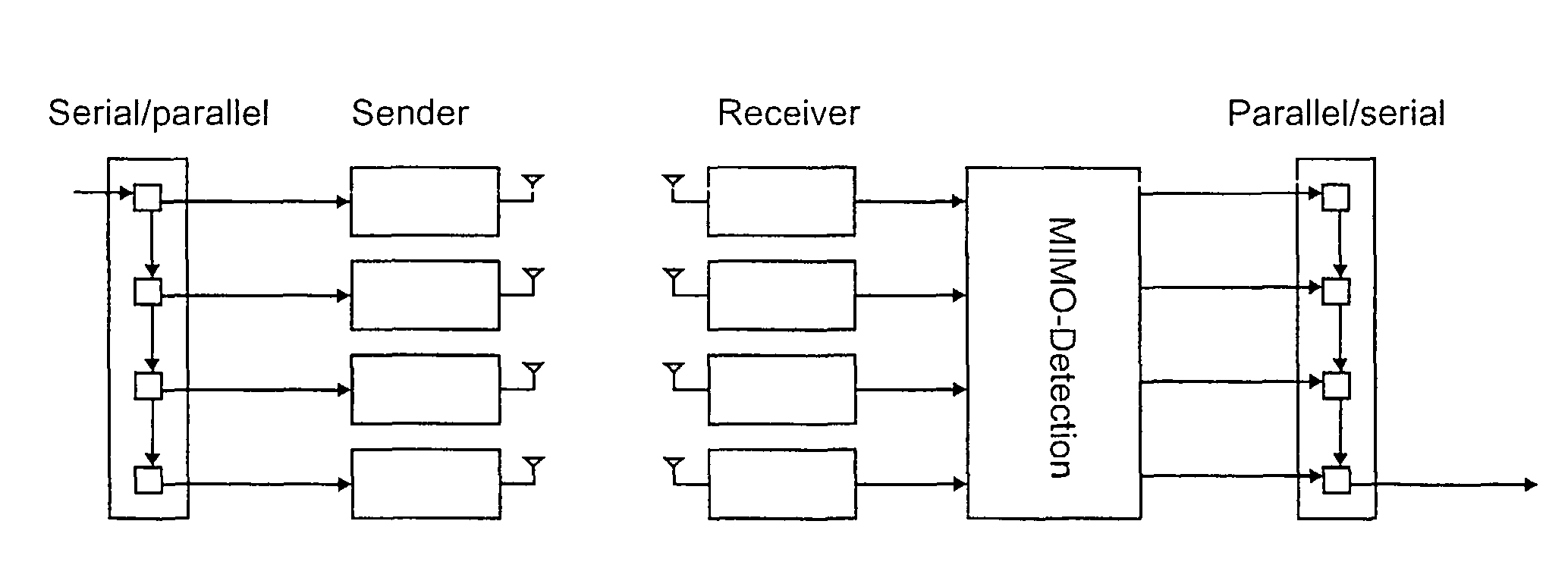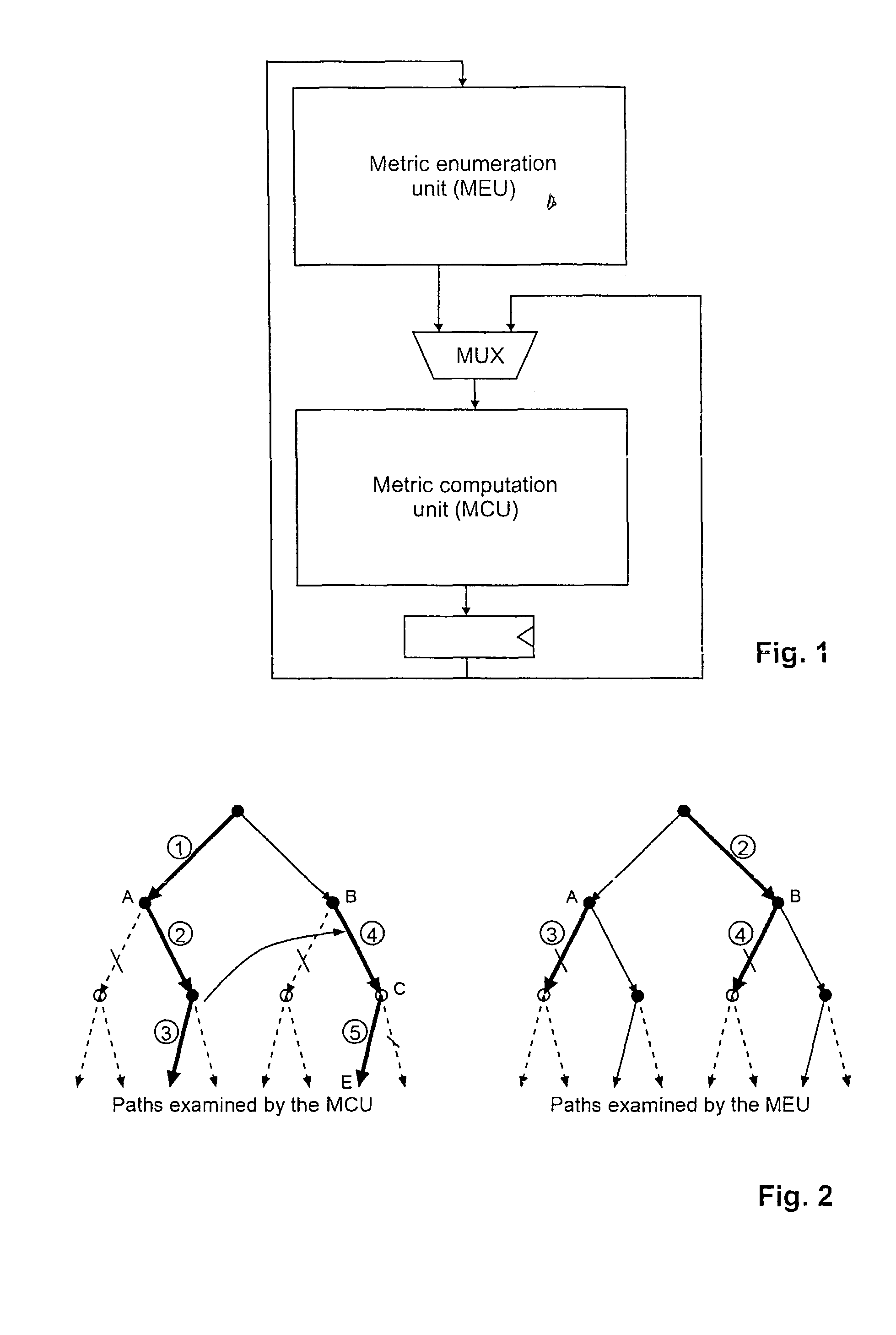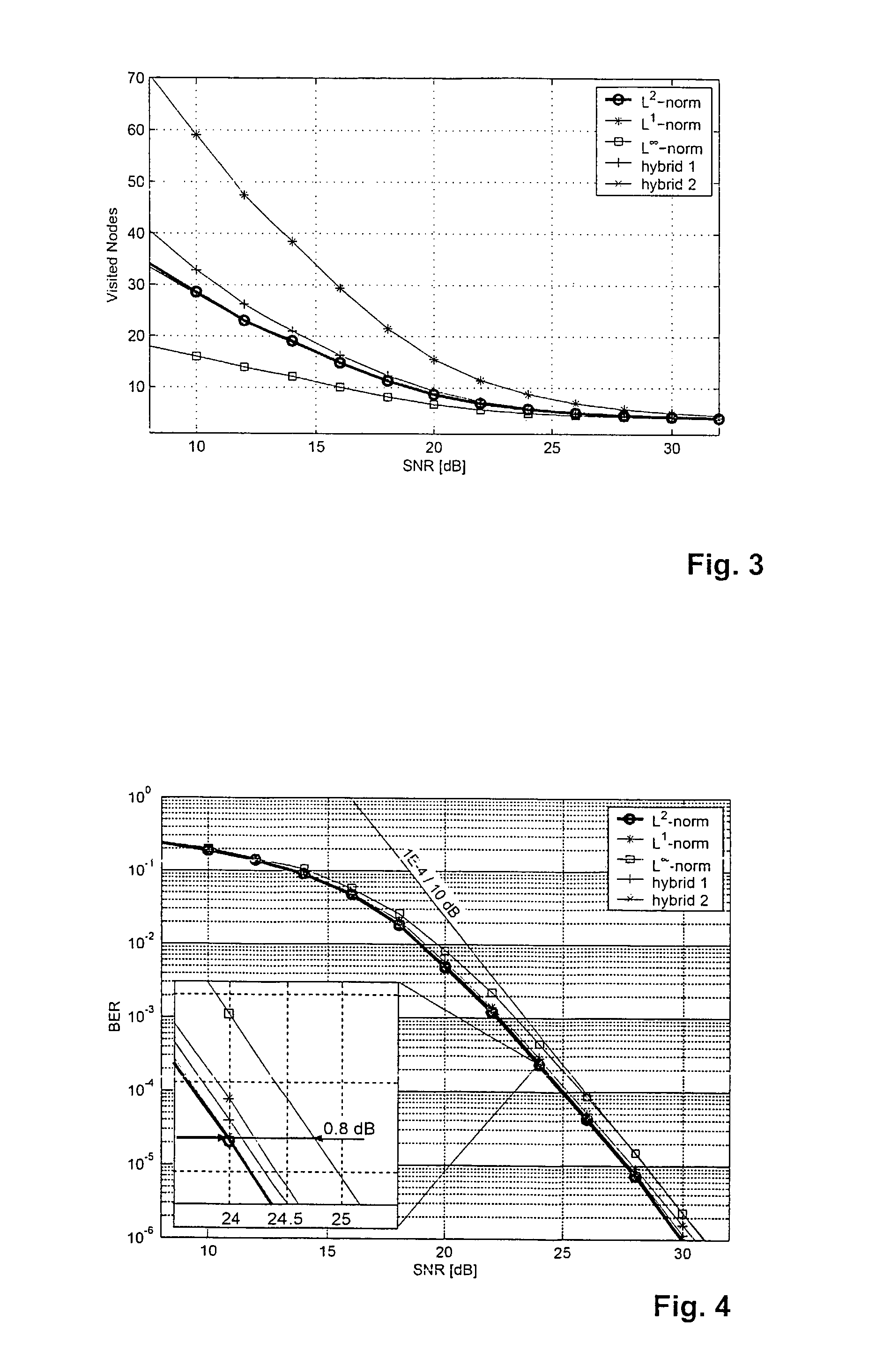Method and device for decoding a signal of multiple input/multiple output system
a signal and input/output technology, applied in diversity/multi-antenna systems, digital transmission, instruments, etc., can solve the problems of exponential transmission rate of the exhaustive search implementation of (2), and the limited attention of the vlsi implementation of the algorithm
- Summary
- Abstract
- Description
- Claims
- Application Information
AI Technical Summary
Benefits of technology
Problems solved by technology
Method used
Image
Examples
first embodiment
7.1 First embodiment
[0137]7.1.1 Overview
[0138]FIG. 7 is an overall block diagram of a first embodiment of a sphere decoder. It consists of several parts which will be explained in detail in this chapter. The major blocks in FIG. 7 are:
[0139]Input Handling: reads the inputs, stores them until they are needed and provides the right values to the Calculation Unit
[0140]Precalculation Unit: this unit does the calculation of the Euclidean distance, searches the nearest constellation point and provides it to the Calculation Unit.
[0141]Calculation Unit: controls the algorithm (FSM), provides the Sphere ALU and the Search Unit with the accurate data and has a temporary register storage for the intermediate results
[0142]Sphere ALU: calculates Ti from Ti+1
[0143]Search Unit: searches the next best constellation point
[0144]Output Handling: provides the result in a manner that they can be read from outside the chip
[0145]7.1.2 Sphere ALU
[0146]The Sphere ALU can e.g. calculate expressions of the t...
second embodiment
7.2 Second Embodiment
[0159]The second, particularity advantageous embodiment of a device for decoding a received signal in a multiple input / multiple output system also uses the general design of FIG. 1 with a more explicit (i.e., more obvious) separation of MEU and MCU, which carry out a depth-first tree traversal. It uses a decoding scheme as illustrated by FIG. 2. A more detailed block diagram of the circuit is shown in FIG. 10.
[0160]The second embodiment also adopts the one-node-per-cycle architecture. However, it computes ŷ using ŷ=QHy and employs the l∞-norm approximation as well as a scheme for direct SE enumeration (described below) in systems with QAM modulation.
[0161]A. Direct SE Enumeration for PSK-Like Constellations
[0162]In [11], Hochwald and ten Brink proposed a scheme that allows to compute boundaries of admissible intervals for complex-valued constellations having the constellation points arranged on concentric circles (e.g., PSK, 16-QAM). However, the original propos...
PUM
 Login to View More
Login to View More Abstract
Description
Claims
Application Information
 Login to View More
Login to View More - R&D
- Intellectual Property
- Life Sciences
- Materials
- Tech Scout
- Unparalleled Data Quality
- Higher Quality Content
- 60% Fewer Hallucinations
Browse by: Latest US Patents, China's latest patents, Technical Efficacy Thesaurus, Application Domain, Technology Topic, Popular Technical Reports.
© 2025 PatSnap. All rights reserved.Legal|Privacy policy|Modern Slavery Act Transparency Statement|Sitemap|About US| Contact US: help@patsnap.com



